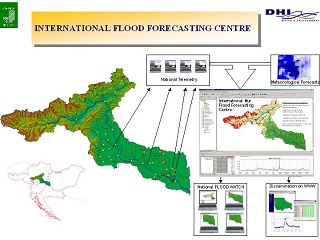Slovenia and Hungary create coordinated water management system to better use and protect a shared river area.
- 20 July 2015
People who have participated in the project’s conferences and workshops, and those who have seen the project’s plan for revitalising the region’s rivers are excited about seeing the investment come to life.
In order to regain the natural condition needed for preserving biodiversity and attracting tourism and recreation, the rivers of Hungary and Slovenia were in need of revitalisation. To accomplish this, the Water is Environmental Pearl (WEP) project aimed to institutionalise coordinated policies and activities between the two countries. Specifically, its objectives were to improve the surrounding river environment and to use the revitalised river environments to improve the surrounding urban areas.
Experts involved in planning
The project started by bringing together experts from both countries to establish a list of shared best practices for river management. As an initial focus, the group chose flood management and created a high-water forecasting model and flood risk map. In addition, the project also organised numerous conferences and workshops on the importance of river management in order to better inform the public on the topic.
When rivers flow across international borders, the need for cooperation between countries sharing a river basin is especially important. After all, joint protection of river basins not only ensures the sustainability of the surrounding environment, but also plays an important role in the development of a sustainable regional economy.
Unfortunately, the opposite has happened. With coordinated water management programmes between countries previously non-existent, the rivers were poorly managed for too long. As a result, today the Ledava River, which flows between Slovenia and Hungary, is plagued by environmental problems such as drought on one side and floods on the other. Without a coordinated policy, the actions of one country have a direct impact on neighbouring countries. For example, when one side make canals in the river, a negative impact on the natural habitats if felt regardless of country lines – destroying opportunities for river recreation and tourism.
Showing results
Investment into the project’s recommendations – including the creation of new building permits for urban projects along the river’s course – are already in process. Several municipalities located along the river basin have developed and implemented coordinated flood planning programmes, and its forecasting component played an invaluable role in helping the area avoid recent spring floods.
The project has also gone to great lengths to build public awareness. Activities included conferences, the publication of a bilingual handbook, the creation of brochures and the organisation of events for schoolchildren and local residents. As a result, the project was well-placed to continue to providing results even after the official programming period came to a close – and investments still continue to happen now.
Total investment and EU funding
Total investment for the project “Water is Environmental Pearl (WEP)” is EUR 828 945, of which the EU’s European Regional Development Fund is contributing EUR 704 602 from the Cross Border Operational Programme “Slovenia - Hungary” for the 2007 to 2013 programming period.

